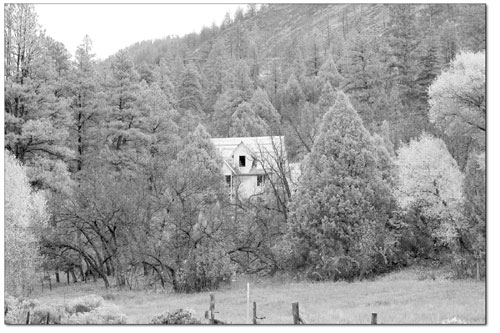| ||
| The new shape of the West Institute demystifies modern Western living SideStory: The 10 Truths and Trends in the New West
by Will Sands That’s happening to the West?” is a question regularly heard up and down Main Avenue and along the entire Rocky Mountain chain. It’s also a question that the prominent think tank, the Sonoran Institute, is attempting to answer. Last week, the nonprofit released the report, “You’ve Come a Long Way, Cowboy: 10 Truths and Trends in the New American West.” Underlying the group’s findings is the fact that the West is changing rapidly. Booms in population and changes in economy are altering the look and feel of local landscapes. With this in mind, the Sonoran Institute highlights 10 truths and trends of the New West. The hope is that the list will dispel myths about Western life and help guide residents and officials toward maintaining a prosperous and environmentally healthy region. “These changes are the type of things people see around them and wonder if they’re the only ones experiencing it,” explained Wendy Erica Werden, the institute’s director of communications. “But the West as a whole is undergoing a tremendous amount of change. We’re hoping to help communities effectively sculpt change and do positive things about it.” Many of the 10 Truths in “You’ve Come a Long Way, Cowboy” reflect the changing dynamics in Durango and La Plata County. Among the most pressing changes is the new face of the “cowboy” and agriculture in general. Werden noted that ranching and farming remain vital components of Southwest Colorado but are becoming smaller pieces of the local landscape. “Agriculture is still an important industry,” she said. “We will always need an ag presence in the West. It produces open land and is a good friend to quality of life. But agriculture needs to be considered in light of other economic dynamics. Each community needs to determine what role it will play.” A less vital industry, according to the Sonoran Institute, is oil and gas, another La Plata County mainstay. Unlike agriculture, energy development damages quality of life. In addition, the combined oil and gas resources of the Rocky Mountain West would only satisfy national demands for a few months but cause irrevocable damages, according to the report. “Even if you take the combined energy resources of the intermountain states, they are not a solution to the national demands. In fact, the entire resource could be consumed in 3½ months,” Werden said. “We really need to look harder at alternatives so we’re not sacrificing quality of life for short-term gains.” The biggest sweeping reality of the New West, according to the institute, is that people are choosing to move here, and they’re doing it in large numbers. “More than anything else, growing and shifting populations are shaping the New West,” Werden said. “People are looking for something more than metropolitan areas, and they’re finding that quality of life in the towns and cities of the West.” Because of this force, Western communities are no longer deciding whether or not to grow. They are now considering how best to grow. “There are ways you can grow effectively if the community defines its vision for the future,” Werden said. “Growth can be good if it’s in a constructive way where long-term and short-term community members agree on the direction and understand what that means for their quality of life.” •
|
In this week's issue...
- May 15, 2025
- End of the trail
Despite tariff pause, Colorado bike company can’t hang on through supply chain chaos
- May 8, 2025
- Shared pain
Dismal trend highlights need to cut usage in Upper Basin, too
- April 24, 2025
- A tale of two bills
Nuclear gets all the hype, but optimizing infrastructure will have bigger impact


